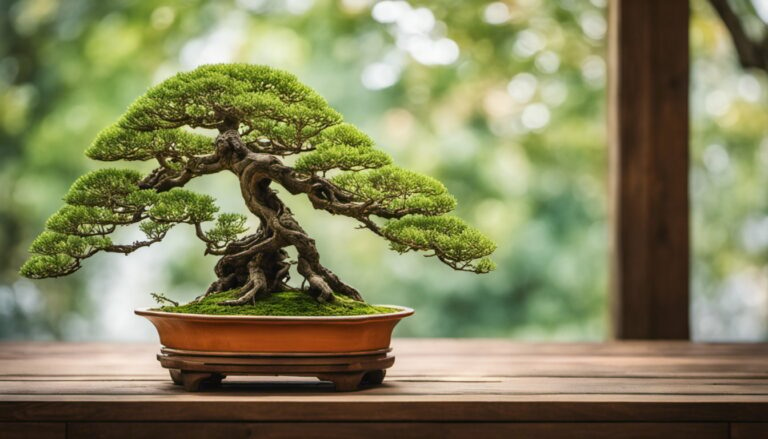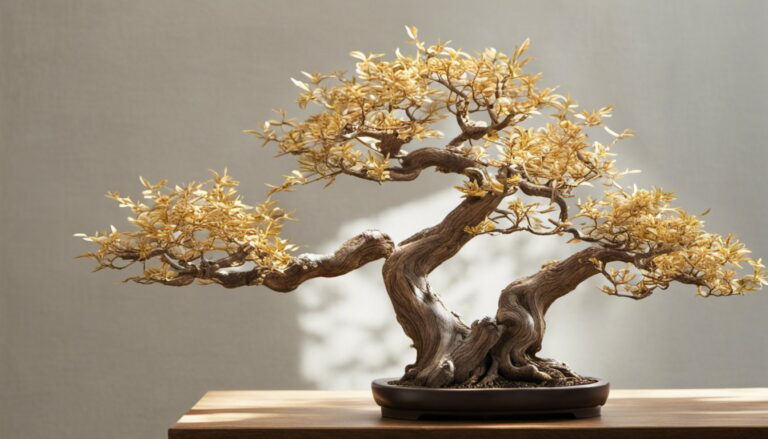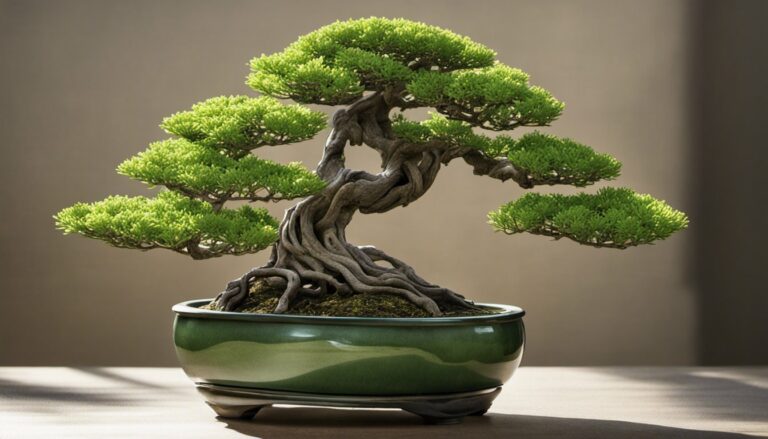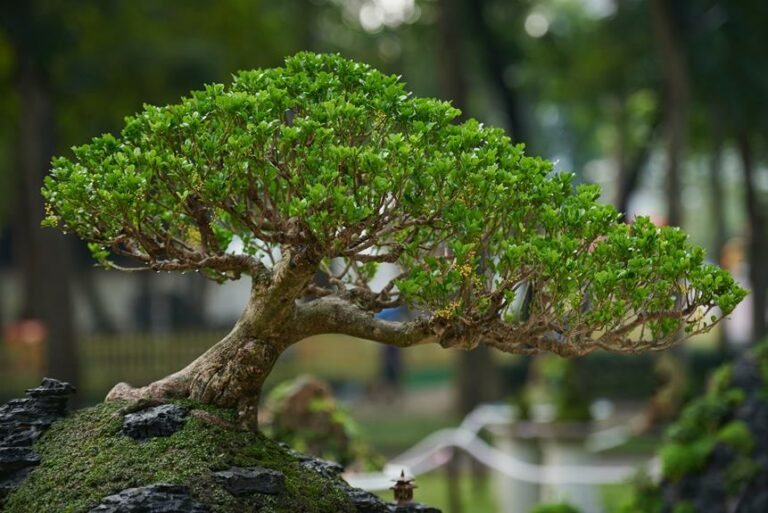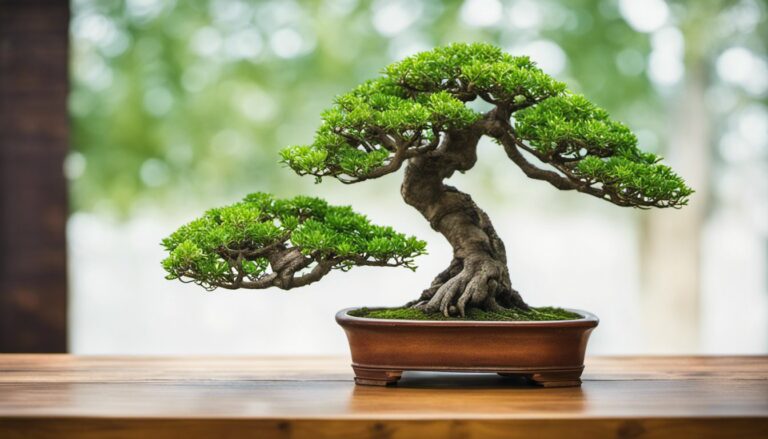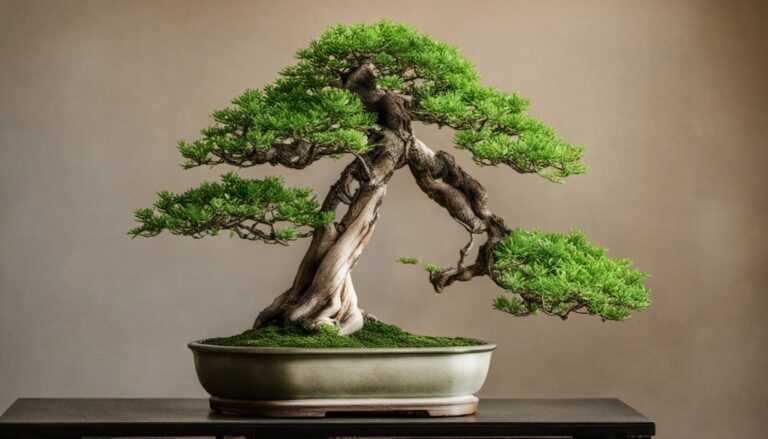Revolutionize Your Bonsai With Expert Trunk Development
Are you ready to take your bonsai skills to the next level? Then it's time for you to revolutionize your bonsai with expert trunk development.
The trunk of your bonsai tree is not only crucial for its health and nutrient flow, but it also plays a vital role in its overall appearance. A well-developed trunk gives your bonsai a natural and mature look, which is highly sought after in bonsai competitions.
In this article, we will explore the importance of trunk development, the factors to consider, and the techniques you can use to achieve the desired results. From growing sacrificial branches to creating gradual taper, each step of trunk development requires time, practice, and expert guidance.
Get ready to transform your bonsai into a true masterpiece.
Key Takeaways
- Well-developed trunks are essential for health and nutrient flow in bonsai trees.
- Thicker trunks give a natural appearance, make bonsai look older, and are more aesthetically pleasing.
- Different bonsai styles prioritize trunk parameters differently.
- Techniques for trunk development include sacrificial branches, trunk chopping, and gradual growth and shaping.
Importance of Bonsai Trunk Development
One key factor in successful bonsai cultivation is the development of a well-formed and robust trunk. The trunk of a bonsai tree is essential for its overall health and nutrient flow. Not only does a well-developed trunk give a natural appearance to the bonsai, but it also makes the tree look older, which is highly desired in the art of bonsai.
Additionally, thicker trunks are more aesthetically pleasing and perform better in bonsai competitions. It's important to note that different bonsai styles prioritize trunk parameters differently. Factors such as timing, style, and species should be considered when working on trunk development.
Factors to Consider in Trunk Development
To achieve successful trunk development in bonsai cultivation, it's crucial to carefully consider various factors that contribute to the overall growth and appearance of the tree.
Factors such as timing, style, and species play significant roles in trunk development. Timing is important because certain techniques, like trunk chopping and tourniquets, are best done during specific seasons.
Different bonsai styles also prioritize trunk parameters differently, so understanding the desired style is essential.
Additionally, the species of the bonsai tree can affect trunk development. Fast-growing species like Ficus and Chinese elms are more suitable for trunk development.
Techniques for Trunk Development
Revolutionize your bonsai by implementing effective techniques for trunk development.
To achieve a well-developed and aesthetically pleasing trunk, you can utilize various methods.
One technique is to grow sacrificial branches, which promote trunk thickness. By allowing these branches to grow freely, the trunk will gain girth and strength.
Another method is trunk chopping, where you strategically prune the trunk to create taper and add visual interest.
Gradual growth, shaping, and tapering are also effective in shaping the trunk over time.
Keep in mind that each stage of trunk development takes several years and requires practice and expert advice.
Additionally, consider accelerating trunk growth by growing multiple sacrifice branches or letting the tree grow freely without pruning.
Remember to follow instructions carefully to ensure successful trunk development.
Accelerating Trunk Growth
To speed up the growth of your bonsai trunk, you can employ methods such as growing multiple sacrificial branches or allowing the tree to grow freely without regular pruning.
Growing sacrificial branches involves selecting strong, fast-growing shoots and allowing them to grow unchecked. These branches divert energy from the main trunk, promoting its thickening and development.
Another approach is to let the tree grow freely without pruning. By avoiding regular pruning, you allow the bonsai to focus its energy on trunk growth rather than diverting it to other parts of the tree.
However, it's important to note that these methods are best suited for mature bonsai trees, as younger trees may experience regression in their overall development.
Achieving Taper in the Trunk
To achieve taper in the trunk of your bonsai, you can introduce a gradual taper using effective methods such as trunk chopping. This technique involves cutting the trunk at strategic points to encourage new growth and create a tapered appearance.
Here are four steps to achieve taper in the trunk:
- Identify the areas of the trunk where taper is desired.
- Carefully make a clean cut at the selected points, ensuring that the angle of the cut promotes the desired taper.
- Allow the tree to heal and recover, providing proper care and maintenance during this time.
- As new growth emerges, carefully shape and prune the branches to enhance the taper and overall aesthetic of the bonsai.
Alternative Methods for Trunk Development
To explore alternative methods for trunk development, let's delve into some additional approaches that can be utilized alongside or instead of trunk chopping to achieve desired results.
One alternative method is growing bonsai trees in the ground. This allows the tree to develop a thick and sturdy trunk naturally, as it can access more nutrients and grow freely.
Another method is trunk merging, where two or more young trees are planted close together and allowed to grow into each other, creating a single, thicker trunk.
Trunk splitting is also an option, where a tree is split into multiple sections and then allowed to grow back together, resulting in a thicker trunk.
However, it's important to consider the potential downsides of these methods, such as overwatering and increased susceptibility to pests.
Always follow instructions carefully to ensure successful trunk development.
Additional Considerations and Tips
When considering additional considerations and tips for bonsai trunk development, prioritize proper care and maintenance. Here are some important points to keep in mind:
- Consistent watering: Bonsai trees require regular watering, ensuring the soil is moist but not waterlogged. Proper hydration promotes healthy trunk growth and overall tree vitality.
- Adequate sunlight: Place your bonsai in a spot where it can receive sufficient sunlight. This will encourage vigorous growth and strengthen the trunk.
- Fertilization: Use a balanced bonsai fertilizer during the growing season to provide essential nutrients for trunk development. Follow the recommended dosage and frequency for optimal results.
- Regular pruning: Prune your bonsai to remove unwanted branches and encourage new growth. This will help shape the trunk and maintain its desired form.
Conclusion
So, there you have it! By focusing on trunk development, you can truly revolutionize your bonsai.
Remember, a well-developed trunk not only enhances the health and aesthetics of your bonsai, but it also adds that sought-after sense of age and maturity.
With the right techniques and a little patience, you can transform your bonsai into a true masterpiece.
So, get out there, apply what you've learned, and watch your bonsai thrive and grow into something truly extraordinary.
Happy bonsai-ing!


